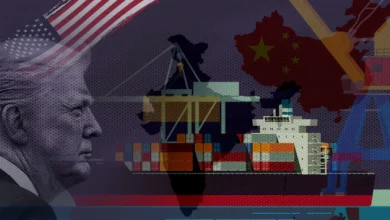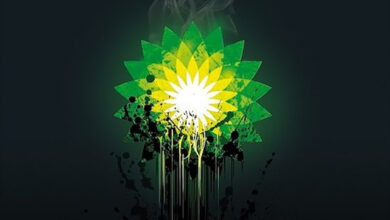Indian Government Accuses Ola, Uber And Other Aggregators Of Inflating Cab Prices For Older Customers
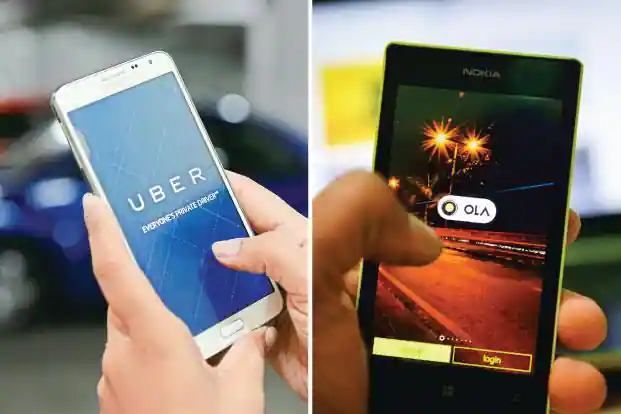
Indian Government Accuses Ola, Uber And Other Aggregators Of Inflating Cab Prices For Older Customers
Uber and Ola’s prices are rising. Consumer concerns about “unfair commercial practises” such as surge pricing, ride cancellation, and drivers refusing to switch on the air conditioner have prompted the government to take action against cab aggregators like Uber and Ola.
The consumer affairs ministry met with firms including Uber, Ola, Rapido, Meru Cabs, and Jugnoo and told them that they would face severe consequences if they did not comply.
Surge pricing, frequent cancellation of rides by drivers over small issues like the location and payment mode, reluctance to switch on air conditioners in cabs, variable pricing for different customers, and more were among the topics discussed.
In various locations around the country, cab aggregators have announced pricing increases. The rising cost of gasoline and diesel in the country was one reason for the price increase. Some cab drivers have even refused to turn on the air conditioner, requesting an extra fee from passengers.
The government has issued a strong warning.
“We informed them (cab aggregators) about the growing number of consumer complaints concerning their platforms,” says the source. We also provided them with statistics. After the discussion, consumer affairs secretary Rohit Kumar Singh said, “We have ordered them to improve their system and address consumer complaints. The responsible authority will take drastic action.”
“The authority is expected to publish an advice to ensure that cab aggregators do not engage in unfair commercial practises that violate customers’ rights,” said Nidhi Khare, the Central Consumer Protection Authority’s chief commissioner (CCPA).
“We have asked the cab aggregators for an explanation of their procedures because the number of complaints is really significant,” Khare said.
“We are working with the Department of Consumer Affairs and appreciate their views, and we will continue to provide input.” We aspire to be the platform of choice for both riders and drivers, and we’ll keep investing in technology and customer service to make that happen.” Uber India and South Asia’s Head of Central Operations, Nitish Bhushan, said
“We are dedicated to lifting the bar – for ourselves, our industry, and, most importantly, for the people who use our services,” Bhushan said.
Inflated price for old customers
Surge pricing and differential pricing for existing and new consumers are other issues that the government is looking into. “Cab aggregators appear to be utilising algorithms to attract new clients, putting existing customers at a disadvantage. This is unequal treatment, “Khare continued.
According to the authority, Cab aggregators charge a premium to existing clients and give discounts to attract new consumers. The regulator has labelled differential pricing for the exact location as “unfair conduct.”
According to Khare, aggregators will be asked to explain their algorithms and rules for determining rates, cancellation fees, and surge prices.
Aggregators have also been requested to report their efforts to protect their customers’ personal information on their platforms.
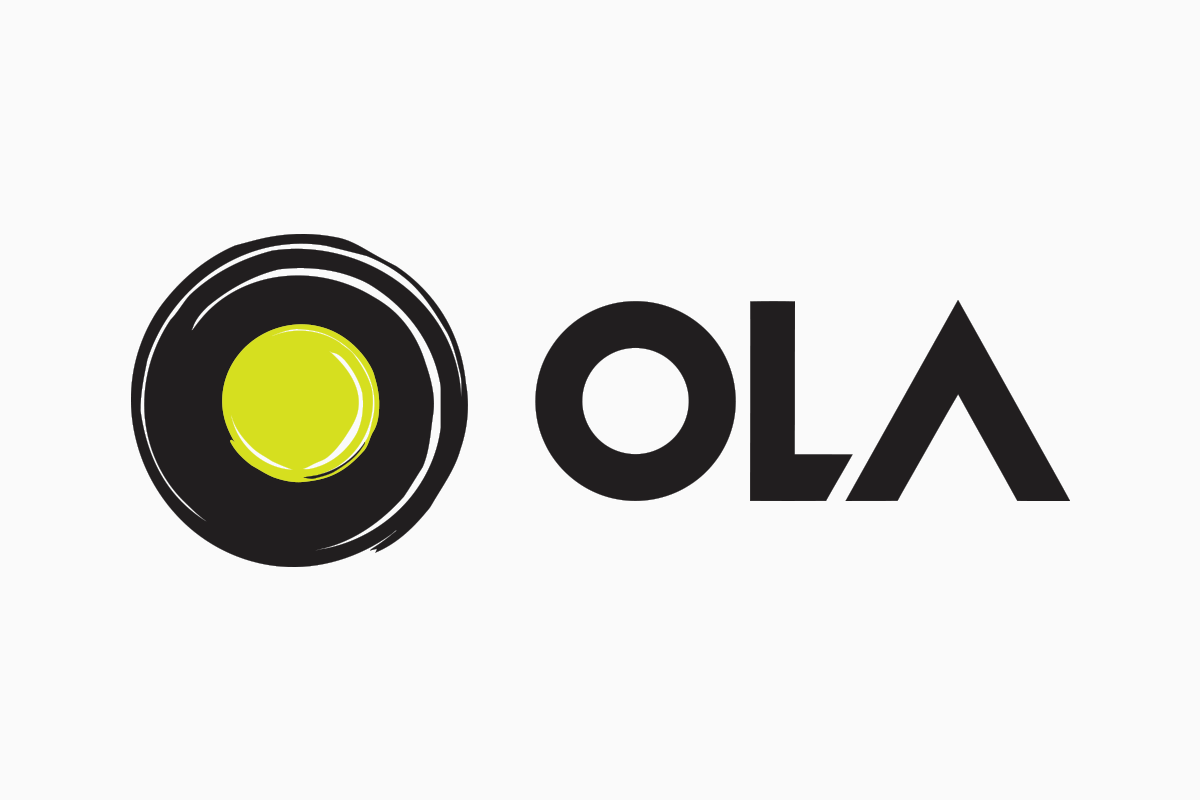
About Ola
Ola Cabs is an international ridesharing firm based in Bangalore, India. Financial services, cloud kitchens, and a used-car marketplace are among its other business sectors.
The company is owned by a number of venture capitalists, including Softbank. Ola entered its first overseas market, Australia, in January 2018 and launched in New Zealand in September 2018. Ola launched operations in the United Kingdom in March 2019.
History
Ola Cabs paid roughly $12.37 billion (US$160 million) in March 2015 for Bangalore-based cab operator TaxiForSure. Ola users have had access to TFS cabs through the Ola smartphone app since June 2015. Ola also bought Geotagg, a trip-planning application firm, for an unknown price later in the year in November.
Ola purchased struggling food tech company Foodpanda India in December 2017 in a bid to expand beyond cab aggregation and capitalise on the expanding food delivery industry. Ridlr (previously Traffline), a public transportation ticketing service, was Ola’s second acquisition in April 2018. Later in August 2018, Ola invested $100 million in the scooter rental startup Vogo’s Series A round in December.
The Karnataka state transport department banned Ola’s operation licence for six months in March 2019 for violating licencing terms and the Karnataka On-Demand Transportation Technology Aggregator Rules, 2016. This was because Ola was operating bike taxi services despite only having a four-wheel taxi licence. The business described the judgement as disappointing and said it would work with driving partners to keep operating. They claimed to be in contact with authorities to resolve the situation.
Before its launch in London in 2019, more than 10,000 drivers applied both online and offline. Ola debuted its taxi-hailing services in London in February 2020, with over 25,000 drivers enrolled.
In the financial year 2020-21, Ola made its first-ever operational profit of 90 crore (US$12 million).
Subsidiaries and services
ANI Technologies operates Ola Fleet, Ola Financial Services, Ola Foods, Ola Dash, Ola Cars, and the ride-hailing firm Ola Cabs. It also owns a 6% investment in Ola Electric, a startup that makes electric scooters, as of September 2019.
Ride-hailing
Ola Cabs offers many levels of service, from budget to luxury. Cabs can be booked by a smartphone app or a website, and the service takes cash and credit cards. As of 2014, it claims to have a daily average of more than 150,000 bookings and a 60 per cent market share in India. As of 2019, the company had grown to over 1.5 million drivers spread throughout 250 cities.
Ola diversified into auto-rickshaws on a trial basis in Bengaluru in November 2014. Ola Auto began expanding to other cities such as Delhi, Pune, Chennai, and Hyderabad in December 2014, following the trial period.
It launched a bike taxi service on its platform in March 2016. Ola has run into legal issues in a number of states where running bike taxis is prohibited.
Ola Fleet
Ola purchased wireless taxi provider GCabs in January 2015 for an unknown sum and rebranded it to Ola Fleet Technologies. Ola Fleet is in the business of leasing cabs to its drivers.
Ola Foods
Ola Cafe entered the meal delivery market in March 2015, but the service was discontinued in March 2016. With the acquisition of Foodpanda’s Indian division for an undisclosed fee in December 2017, it resumed delivering food delivery services. Ola also said it would invest up to $200 million in its food delivery business.
While the number of users and orders increased in 2018 due to discounts and special offers, they fell drastically in early 2019. It ceased meal delivery in June 2019 and laid off most of its 1,500 delivery personnel. It does, however, continue to run Foodpanda’s cloud kitchen service. Ola Foods has more than 50 cloud kitchens in six locations as of 2021, including its flagship brand, Khichdi Experiment.
Ola Dash
Ola Store, a grocery delivery service, was launched in July 2015 before being shut down in March 2016. Ola Store will return in November 2021, starting with a pilot launch in Bangalore, offering speedy delivery of groceries and basics. Ola had opened 200 dark stores in nine locations by January 2022 and had rebranded the service as Ola Dash.
Ola Financial Services
OlaMoney, Ola’s mobile payments and wallet solution, was introduced in November 2015. OlaMoney is a subsidiary of Ola Financial Services, providing insurance, credit cards, and vehicle loans.
Ola Cars
Ola Cars, Ola’s new and pre-owned car marketplace, began in 30 cities in October 2021. Ola Electric and other brands plan to sell new automobiles through the online market.
Criticism
Technology
Ola Cabs’ technology has been criticised for its mobile app’s security. The API calls could be repeated to replenish the wallet.
In August 2016, a privacy breach occurred when an individual in Chennai obtained customer details such as names, phone numbers, and addresses as SMS messages from Bangalore. Even though these unexpected messages were reported to Ola, the corporation ignored them, even when threatened with a TRAI complaint. After getting widespread media coverage and social media attention, the problem was supposedly resolved three weeks later.
Multiple individuals received notifications such as “Your ride is on the way” or “Your ride is here” on January 19, 2020, despite never attempting to book through the site due to a technical fault. In some circumstances, cancelling the ride tried to arrange another ride for you.
Overcharging and lack of transparency in charging
Because of charge issues caused by technological glitches in their system, Ola Cabs’ refund policy has been criticised. Customers have complained about surge pricing, which Ola is accused of using to eliminate competition by cutting costs and then raising prices through surge pricing. The fact that the same ride can cost varying amounts based on the time, day, driver and passenger profiles, histories, and ratings has further enraged customers.
Driver concerns
Ola has been heavily chastised since January 2017 for consistently reducing driver incentives, impacting driver-partners monthly revenue. Most people nowadays are unable to pay their monthly EMIs and other obligations. Cab drivers’ daily earnings are now equal to those of city auto drivers after all fees are deducted.
Charges comprise:
- Base fare
- Distance fare
- Ride time fare
- Peak pricing (direct ratio depending on demand for cabs)
- GST (5 per cent)
- Toll charges
Ola and Uber have also been chastised for their practice of luring drivers and passengers in with discounts and bonuses, then raising fares without passing on the profits. Their method of charging drivers substantial sign-up fees without treating them as workers have also been criticised. Both corporations treat drivers as “contractors” in their contracts, absolving them of legal responsibilities.
In an interview, Pranay Jivrajka, a co-founder of OLA, stated that the company would create 5 million new “opportunities” over the next five years. He was careful not to use the word “job” when describing these prospects. He went on to say that it wasn’t just about producing jobs but also about creating an environment.
Assaults on and Murders of Ola cab drivers
Over 90 incidences of kidnapping and robbery of drivers working for app-based cab aggregators like Ola have been reported by criminals posing as passengers using bogus identities. The most recent incident occurred in Pune in June 2019, when a passenger killed the driver to seize his vehicle. Two more robberies of Ola drivers occurred in New Delhi and Agra, respectively.
Congestion externalities
According to a recent study, Ola may be considering contributing to traffic congestion in three major Indian cities: Mumbai, Bangalore, and New Delhi. During peak hours, the adverse congestion effects were shown to be the worst in the busiest regions of each city. According to the study, many people who utilise these services would otherwise use more efficient public transportation, such as the Delhi Metro.
Driver credibility
In early 2015, the Delhi Transport Authority questioned Ola’s legitimacy and sought driver certification, as did other competitors such as Uber. According to the investigation, about 80% of all drivers in Delhi do not have the authorisation to provide commercial transportation services. Drivers also demonstrated outside the Ola office in Kukatapally, Hyderabad, demanding greater payment transparency.

About Uber
Uber Technologies, Inc. (Uber) is a mobility-as-a-service company based in the United States. It is headquartered in San Francisco and operates in over 72 countries and 10,500 cities. Its services include ride-hailing, food delivery (through Uber Eats and Postmates), package delivery, couriers, freight transportation, electric bicycle and motorised scooter rental (via Lime), and ferry transportation (via local operators). Uber does not own any vehicles and makes money from each booking. Consumers are given a price in advance, but it may fluctuate depending on local supply and demand at the time of booking.
Uber had 118 million monthly active users and generated an average of 19 million trips per day in the fourth quarter of 2021. As of January 2022, it had a 71% market share in ridesharing and a 27% market share in food delivery in the US. It has become so well-known in the sharing economy that the term “uberisation” has been invented to describe the monetisation of service industries through the use of computing platforms.
Other entrepreneurs have coined the phrase “Uber for X” to describe their services. Uber had lost hundreds of millions or billions of dollars every year since 2014, with the exception of 2018, when it abandoned markets in Russia, China, and Southeast Asia in exchange for an interest in competing enterprises.
Like other comparable companies, Uber has been chastised for treating its drivers as independent contractors, disrupting taxicab operations, and causing traffic congestion. The corporation has been chastised for a number of unethical actions and failing to follow local legislation. Uber’s legality has been questioned, and it has been banned in several nations.
Garrett Camp, a computer programmer and co-founder of StumbleUpon, and Travis Kalanick, who sold his Red Swoosh firm for $19 million in 2007, established Uber as Ubercab in 2009.
Camp sought to discover a solution to cut the expense of direct transportation after he and his buddies paid $800 for a private driver. He thought splitting the cost with others would make it more inexpensive, and his concept became Uber. Kalanick joined Camp and credits him with “all credit for the Uber idea.” Camp and his buddies Oscar Salazar and Conrad Whelan constructed the prototype, with Kalanick serving as the company’s “mega adviser.”
Ryan Graves became the first Uber employee in February 2010 after replying to a job posting on Twitter. Graves started as the general manager and was quickly promoted to CEO. Kalanick took over as CEO of Graves in December 2010. Graves was appointed to the position of Chief Operating Officer (COO). Graves held 31.9 million shares as of 2019.
Uber’s services and mobile app went public in San Francisco in 2011 after a beta launch in May 2010. Initially, the software only allowed users to hail a black luxury sedan for 1.5 times the price of a cab. After receiving objections from taxicab drivers in San Francisco, the firm changed its name from UberCab to Uber in 2011.
A nuclear physicist, a computational neuroscientist, and a machinery expert focused on anticipating demand for private hire car drivers were among the company’s early personnel. Uber debuted a service in Chicago in April 2012 that allowed consumers to request a standard cab or an Uber driver via its mobile app.
Uber debuted UberX in July 2012, a less expensive option that permitted drivers to use non-luxury vehicles, including their own cars, subject to a background check, insurance, registration, and vehicle criteria. By the beginning of 2013, the programme had expanded to 35 cities.
Uber was named the best IT business of the year by USA Today in December 2013.
Uber launched a shared transportation service in the San Francisco Bay Area in August 2014. The programme was quickly expanded to other cities throughout the world.
Uber Eats, a food delivery service, was started in August 2014.
In August 2016, Uber sold its operations in China to DiDi in exchange for an 18 per cent interest in the company, citing fierce competition. DiDi announced a $1 billion investment in Uber. Uber began operating in China under the name Yubù in 2014.
Uber paid an unknown sum in December 2016 for the AI research startup Geometric Intelligence. This was announced at the same time as Uber AI Labs. The AI Labs team began with a 15-person core from Geometric Intelligence.
Dara Khosrowshahi, the former CEO of Expedia Group, took over as CEO in August 2017. The Electronic Frontier Foundation gave Uber a five-star privacy rating in July 2017. Still, the group slammed the firm in September for a controversial policy of tracking passengers’ locations even after a ride ended, causing Uber to modify its policy.
Uber invested $225 million in the company in February 2018, combining its operations in Russia, Armenia, Belarus, Georgia, and Kazakhstan with those of Yandex.Taxi. Uber integrated its Southeast Asian services with those of Grab in March 2018 in exchange for a 27.5% share in Grab.
Uber joined the Linux Foundation as a gold member in November 2018.
On May 10, 2019, Uber went public after an initial public offering.
COO Barney Harford and CMO Rebecca Messina both stepped down in June 2019. The marketing department was downsized by a third in July 2019, with 400 staff laid go amid persistent losses. Engineer hiring was halted. Uber laid off an additional 435 people in early September 2019, with 265 from the engineering team and 170 from the product team.
Uber revealed aspirations to become a zero-emission platform by 2020. Uber Green was launched to encourage users to utilise electric and hybrid vehicles.
Uber paid $3.1 billion for Careem in January 2020.
Uber sold its Indian Uber Eats operations to Zomato for 9.99 per cent of Zomato in the same month.
Uber also tested a feature in January 2020 that allowed drivers at the Santa Barbara, Sacramento, and Palm Springs airports to set fares based on a multiple of Uber’s UberX and UberXL rates.
Uber revealed intentions to lay off 3,700 people, or around 14% of its workforce, on May 5, 2020, during the COVID-19 pandemic.
3,000 further job losses and 45 office closures were announced on May 18, 2020. Construction on Uber’s new headquarters on Third Street in San Francisco’s Mission Bay area, which consists of various 6- and 11-story buildings connected by bridges and walkways, was completed around the same time. Uber’s campus, like many others in San Francisco, includes a public plaza, which architecture critic John King of the San Francisco Chronicle dubbed the city’s “best new public space” while praising the entire ensemble for its “low-key sophistication – not what you’d expect from a firm with a rapacious image.”
Uber announced in June 2020 that it would run Marin Transit’s on-demand high-occupancy vehicle fleet, a public transportation service in Marin County, California. This is Uber’s first software-as-a-service relationship.
Uber debuted its grocery delivery service in Latin America, Canada, Miami, and Dallas in July 2020, in collaboration with its majority-owned Cornershop.
Uber paid $2.65 billion for Postmates on December 1, 2020.
Uber paid $1.1 billion in cash and equity to acquire Drizly, an alcohol delivery service, in October 2021. Uber purchased Car Next Door, an Australian car-sharing firm, on January 20, 2022.
Due to the ongoing energy crisis, Uber implemented a fuel premium for rides in the United States and Canada on March 11, 2022. The new tax will vary depending on the length of the trip and the price of petrol in each state. Uber announced in April 2022 that masks will no longer be required for US customers and drivers (subject to local rules in some jurisdictions) and that riders may utilise the front seats unless travelling in a group.
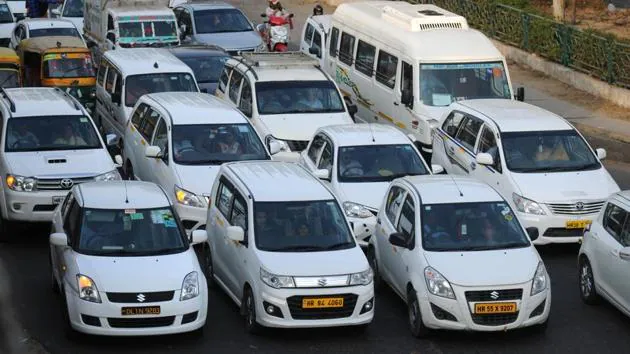
Uber and Ola’s fares are set to rise thanks to the CNG price hike
Uber rides are now expected to cost more. The cab business is planning a 12% rise in fares. According to a recent notice, the decision was made in light of rising fuel prices. Due to the same rationale, the business has already announced a fare increase for Mumbai. The higher rates are intended to protect cab drivers from the effects of rising gasoline prices.
“We listen to feedback from drivers and recognise that the current surge in gasoline prices is generating worry,” said Nitish Bhushan, Uber India and South Asia’s Head of Central Operations. Uber has increased trip charges in Delhi NCR by 12% to help drivers cope with the impact of rising fuel prices. We will continue to monitor fuel price changes in the coming weeks and take additional steps as warranted.
Uber announced a 15% price rise in Mumbai a few days ago. They cited the same rationale for the price increase at the time and stated that future price increases could be made based on fuel price swings.
The primary cause of the increased rates is the rise in fuel prices. Delhi’s petrol prices are at an all-time high. It should be mentioned that petrol costs Rs 105.41 per litre in Delhi, while diesel costs Rs 96.67 per litre. Similarly, petrol costs Rs 120.51 per litre in Mumbai, while diesel costs Rs 104.77 per litre.
Hundreds of cab and auto drivers protested at Jantar Mantar on April 18 against the massive increase in CNG expenses, demanding tariff adjustments and threatening to embark on an indefinite strike if their demands were not met.
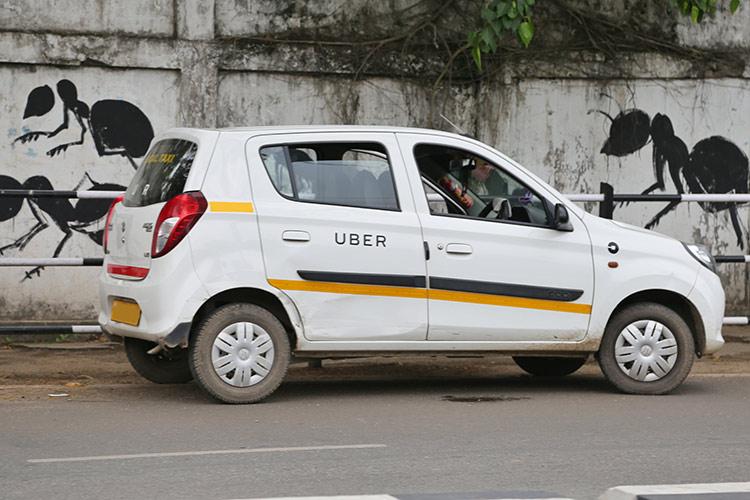
Uber hikes Delhi-NCR fares by 12% over rising fuel prices
“We pay attention to motorist comments and recognise that the current increase in fuel prices is concerning. Uber has increased trip charges in Delhi-NCR by 12% to help drivers cope with the impact of rising fuel prices. In the following weeks, we will continue to monitor gasoline price patterns and take appropriate actions as warranted.” Uber India’s head of central operations, Nitish Bhushan, said in a statement.
The fare increase in Delhi-NCR occurred just ten days after the ride-hailing business boosted cab fares in Mumbai by 15% for the similar reasons.
Cab drivers demonstrated in Jantar Mantar in central Delhi on April 8, demanding a drop in CNG, gasoline, and diesel costs, which have been steadily rising. If their demands were not granted, the drivers vowed to go on an indefinite strike.
Several unions, including the Delhi Taxi, Tourist Transporters and Tour Operators Association, the Sarvodaya Driver Association of Delhi, Expert Driver Solution, Sarvodaya Driver Welfare Association, and Ola and Uber drivers, supported the demonstration.
On April 6, both petrol and diesel prices were increased by 80 paise per litre, bringing the total increase to 10 per litre in 16 days. According to a price notice from state fuel retailers, petrol currently costs 105.41 per litre in Delhi, while diesel costs 96.67 per litre.
CNG now costs 69.11 per kilogramme in Delhi’s National Capital Territory (NCT). Since March, when municipal gas distributors began factoring in high international energy prices, CNG rates in Delhi have climbed by $12.48 per kilogramme.
On April 6, community platform LocalCircles announced its survey findings, revealing that a stunning 79 per cent of survey participants stated drivers cancel rides owing to an unfavourable destination or non-cash means of payment.
The platform claimed in a statement that it received 65,000 answers from app-based cab users in 324 districts throughout India. Driver cancellations were cited as the most common issue by 47% of these consumers, followed by surge pricing (32%), long wait times (9%), safety concerns (5%), and non-compliance with the Covid protocol (2%).
Anil Kumar, who resides in Surajmal Vihar in east Delhi and journeys to his office in Connaught Place every day, believes that the increase in fares will add to the ordinary man’s wallet load. “An Uber journey from my place to work usually costs Rs180-Rs200.” I now have to pay an additional 12%. “Almost all day passengers must also pay surge fares,” he added.
edited and proofread by Nikita sharma

